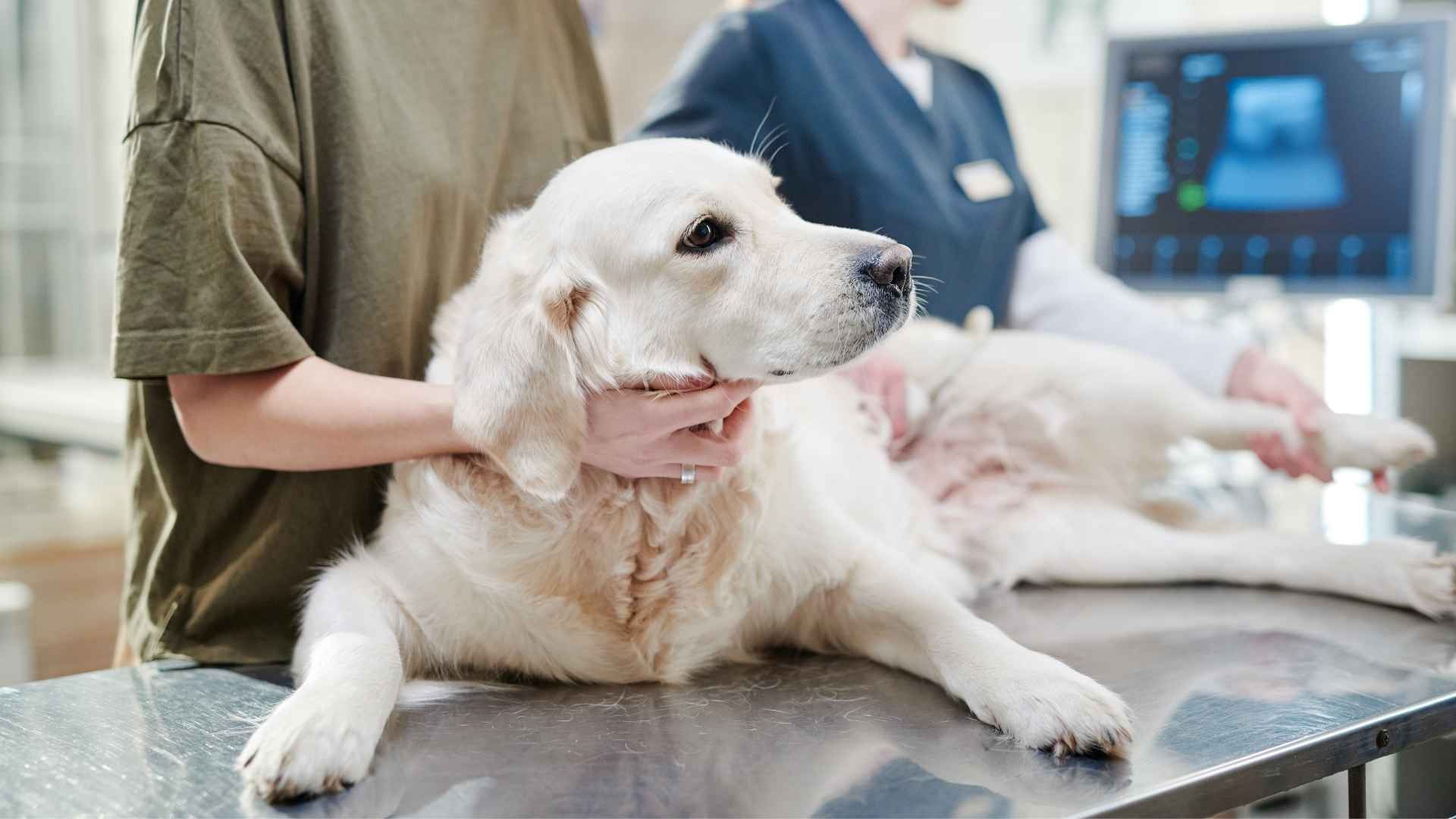Cancer is the leading cause of death in dogs, and certain breeds are more vulnerable than others. A recent study published by the Royal Society Open Science sheds new light on this sobering reality, identifying specific dog breeds that are more susceptible to developing cancer.
Surprisingly, the findings debunk a long-standing myth that larger dogs are inherently at higher risk. While size can play a role in a dog’s overall health, cancer susceptibility appears to be more closely tied to genetics than to body mass alone. Some breeds carry a hereditary predisposition, making them more likely to face this challenging diagnosis.
Understanding which dog breeds are most prone to cancer can help pet parents stay alert to early signs, make informed choices, and take proactive steps for prevention. In this article, we explore seven dog breeds prone to cancer and what you need to know to help protect your furry family member.
Dog Breeds Most Prone To Cancer
1. Golden Retriever

Golden Retrievers are adored for their goofy charm, intelligence, and friendly temperament—but sadly, they also face one of the highest cancer risks of any breed. Recent studies show that around 60–65% of Golden Retrievers may develop cancer in their lifetime, making it the most common cause of death for the breed.
This high rate is largely linked to genetics, as selective breeding has limited the gene pool, increasing the chances of inherited health issues.
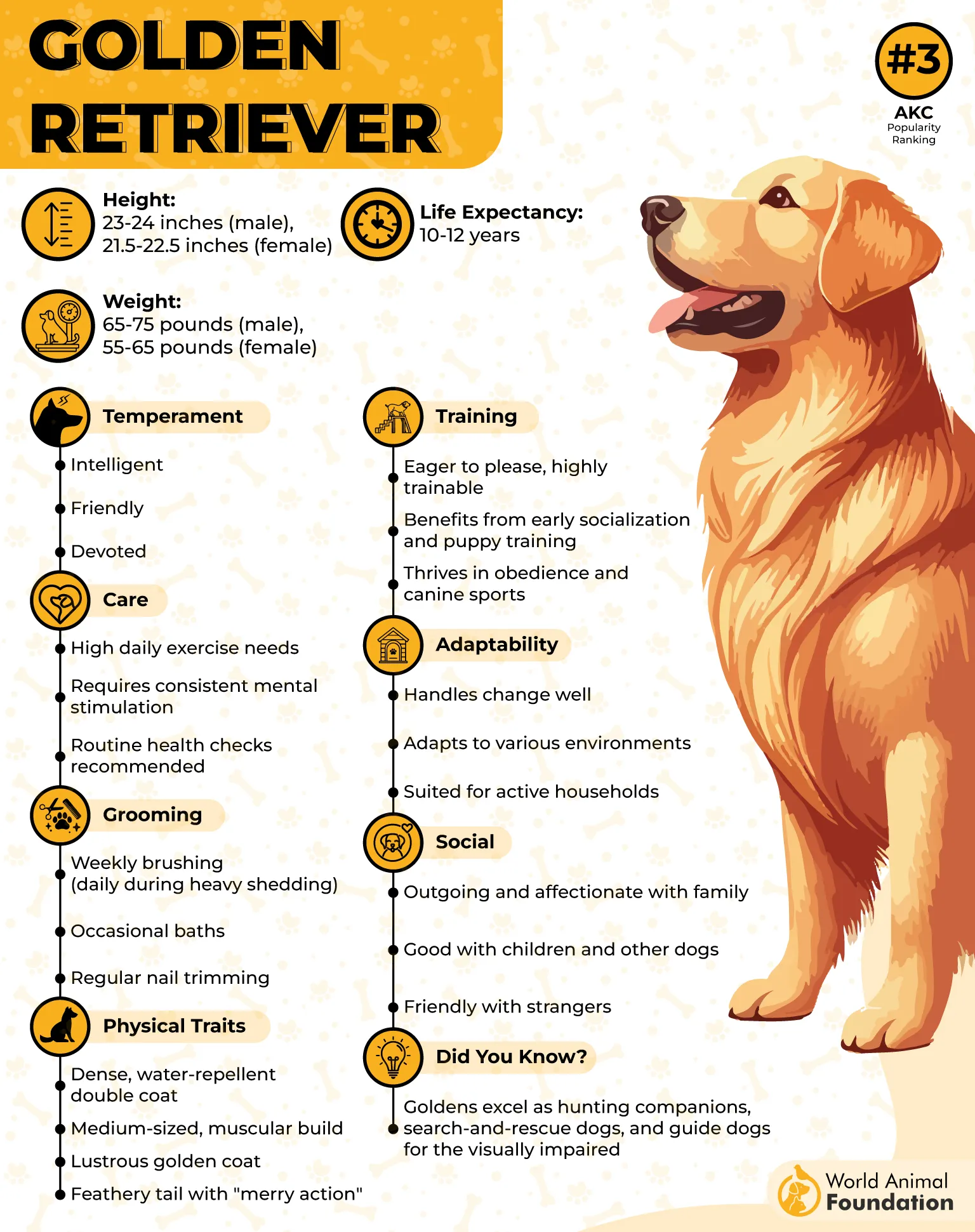
Four different cancer types account for the vast majority of cases in Golden Retrievers: Lymphoma, Hemangiosarcoma, Osteosarcoma, and Mast Cell Tumors. These cancers are aggressive, but early detection can greatly improve outcomes.
Regular vet checkups are key—many experts recommend biannual visits starting around age 5 and more frequent screenings as your Golden enters their senior years.
While lymphoma isn’t curable, dogs diagnosed early can still live full, joyful lives with proper treatment and ongoing care.
2. Boxer

Boxers are beloved for their playful energy, loyalty, and family-friendly personalities—but like many purebred dogs, they’re also prone to certain health issues, especially cancer. Around 1 in 7 Boxers is diagnosed with cancer each year, with some forms being more common in the breed due to genetic predisposition.
One of the most common cancers in Boxers is Mast Cell Tumors, a skin cancer that ranges from harmless lumps to aggressive, ulcerated masses. Fortunately, the less aggressive type is more common and can often be successfully treated if caught early. Regularly checking your Boxer’s skin for new lumps or bumps is key to early detection.
Hemangiosarcoma is another concern. Though it can affect multiple organs, Boxers are especially at increased risk for the cutaneous (skin) form. This version, often sun-induced, is easier to catch early and may be treatable with surgery alone. Limiting sun exposure can also help lower this risk, especially for light-colored Boxers.
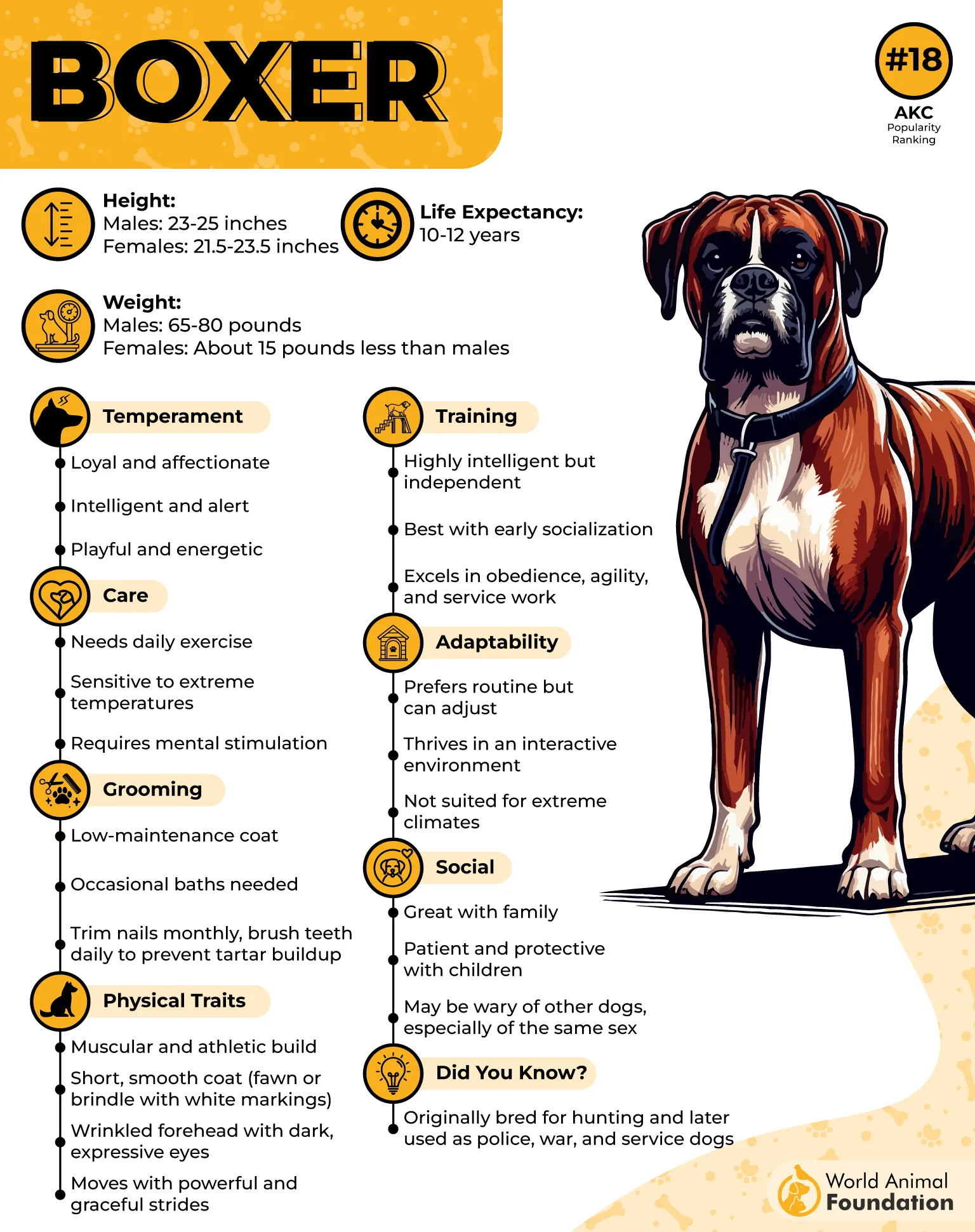
Boxers are also more likely to develop gliomas, a type of brain cancer that can cause seizures and other neurological symptoms. Since signs vary depending on the tumour’s location in the brain, any unusual behaviour or seizure activity should prompt a vet visit.
Lastly, canine Lymphoma, a cancer of the immune system’s white blood cells, is also a concern. Because these cells travel throughout the body, the cancer can spread quickly. Chemotherapy—especially the CHOP protocol, a combination of four different drugs—is the standard and most effective treatment.
Routine checkups and early intervention go a long way in managing these risks. Being informed and observant can help your Boxer stay healthier for longer.
3. Bernese Mountain Dog

The Bernese Mountain Dog is a gentle giant—affectionate, loyal, and full of charm. While their calm temperament and devotion make them wonderful companions, they are unfortunately prone to a serious health concern: histiocytic sarcoma, an aggressive and often fatal form of cancer.
This breed carries a strong genetic predisposition, and histiocytosis remains one of the leading causes of early death in Berners.
There are three main forms of histiocytic sarcoma: localized, disseminated, and hemophagocytic. Localized tumours may appear in the skin, lungs, joints, or bones, while disseminated and hemophagocytic types tend to affect multiple organs, including the spleen, states BMD.org.
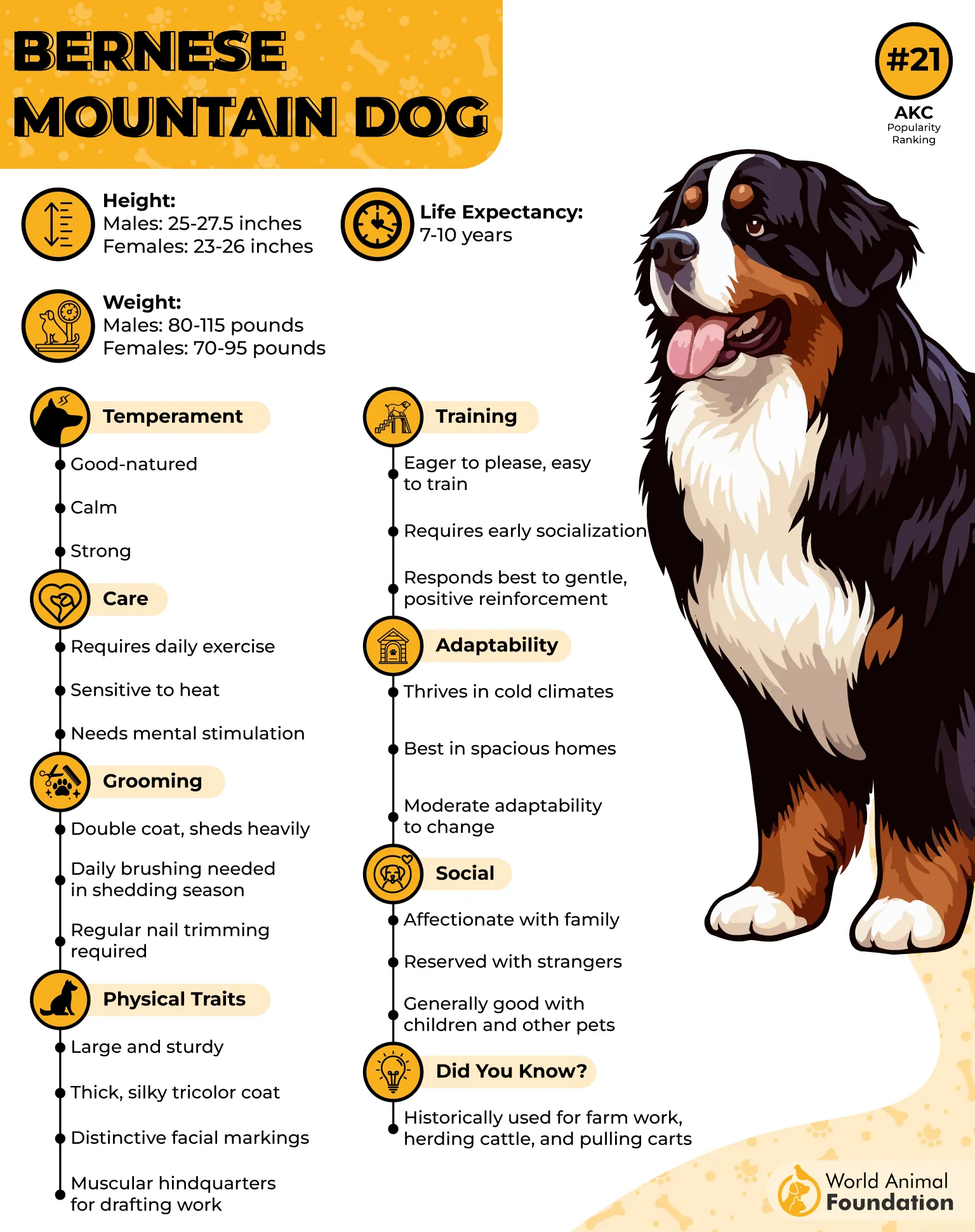
Early symptoms are often vague, such as lethargy, weight loss, poor appetite, and skin abnormalities, but they progress quickly, especially in malignant forms. In some cases, internal tumours can lead to breathing difficulties or anaemia, states PetMD.

Sadly, there is currently no known cure for histiocytosis. Comfort care becomes the focus in advanced cases, and quality of life must guide treatment decisions. Since this cancer is inherited and polygenic, caused by multiple genes, responsible breeding practices are crucial to reducing its prevalence in the breed.
For Bernese Mountain Dog parents, staying vigilant about any early signs and working closely with a trusted vet can make a significant difference in both early detection and care.
4. Rottweiler
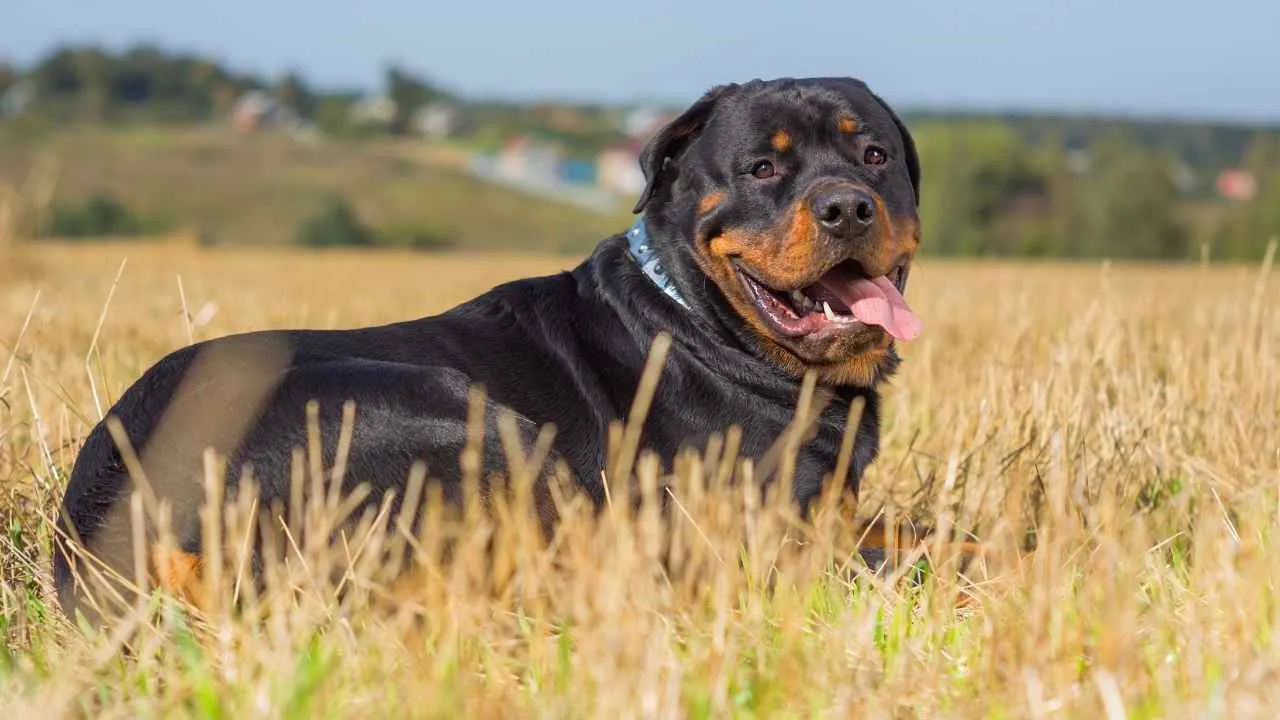
Rottweilers are strong, loyal, and deeply devoted dogs with roots tracing back to the ancient mastiffs of Rome. Despite their resilience, Rottweilers are genetically predisposed to several forms of cancer. Thankfully, advances in early detection and veterinary care continue to improve their odds, helping many Rotties enjoy longer, healthier lives.
One of the most common cancers in Rottweilers is osteosarcoma, a fast-moving bone cancer that usually targets the limbs. It often presents with pain and swelling, and because it spreads quickly, early diagnosis is crucial. With the right combination of surgery and chemotherapy, some dogs can manage this condition successfully.
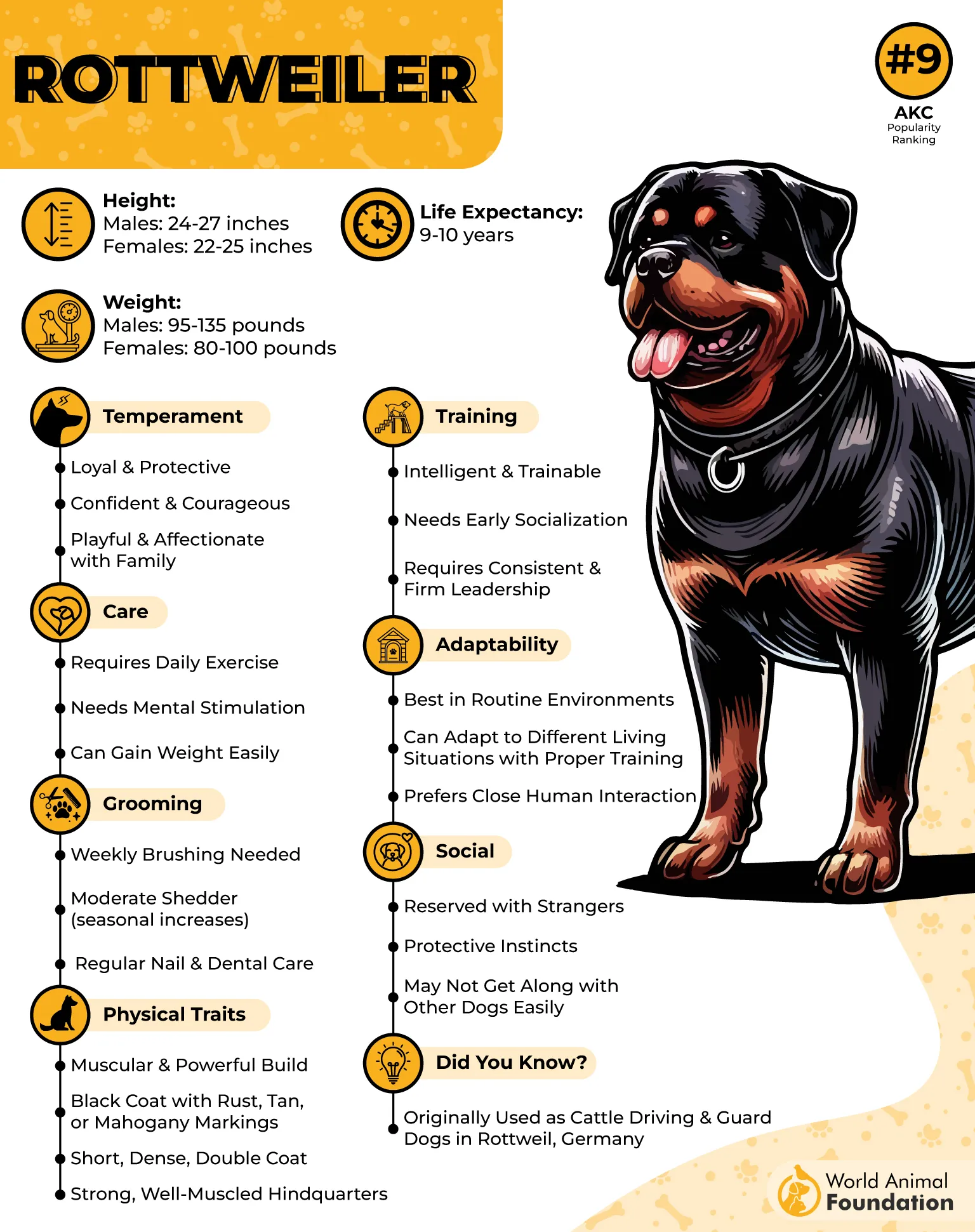
Hemangiosarcoma, a cancer of the blood vessels, is another serious concern. It typically forms in organs like the spleen, heart, or liver and can go unnoticed until it’s advanced. Regular check-ups can help catch it early. Surgical removal is often the first step in treatment, followed by chemotherapy in more aggressive cases.
Mast cell tumors—a form of skin cancer—also affect Rottweilers and can show up as bumps on the skin. Some are benign and easily removed, while others may require more intensive care, like radiation or chemotherapy. Spotting these changes early greatly increases the chances of effective treatment.

Lymphoma, a cancer of the lymphatic system, is also seen in this breed. It impacts the lymph nodes, liver, spleen, and beyond. Fortunately, lymphoma in Rottweilers often responds well to chemotherapy. Depending on the dog’s needs, treatment may involve multiple medications over time or simpler single-drug protocols.
For Rottweiler parents, vigilance and routine vet visits are key to catching these cancers early and giving your pup the best chance at a happy, healthy life.
5. Great Dane

The Great Dane, often called the “Apollo of dogs,” is a gentle giant with roots in 1800s Germany, where it was bred to hunt wild boar and guard estates. Despite their imposing size, Great Danes are affectionate family companions known for their sweet, calm nature.
Like many large and giant breeds, Great Danes are unfortunately more prone to developing cancer, sometimes even at a younger age. Regular checkups, blood work, and early detection go a long way in managing these health risks and ensuring your Dane lives a full and happy life.
Osteosarcoma, a common and aggressive bone cancer, is one of the top concerns for this breed. It often strikes the limbs, particularly the bones around the knees and hips, and may present as limping, leg pain, swelling, or lethargy. Because it spreads quickly, catching it early is crucial, states WebMD.
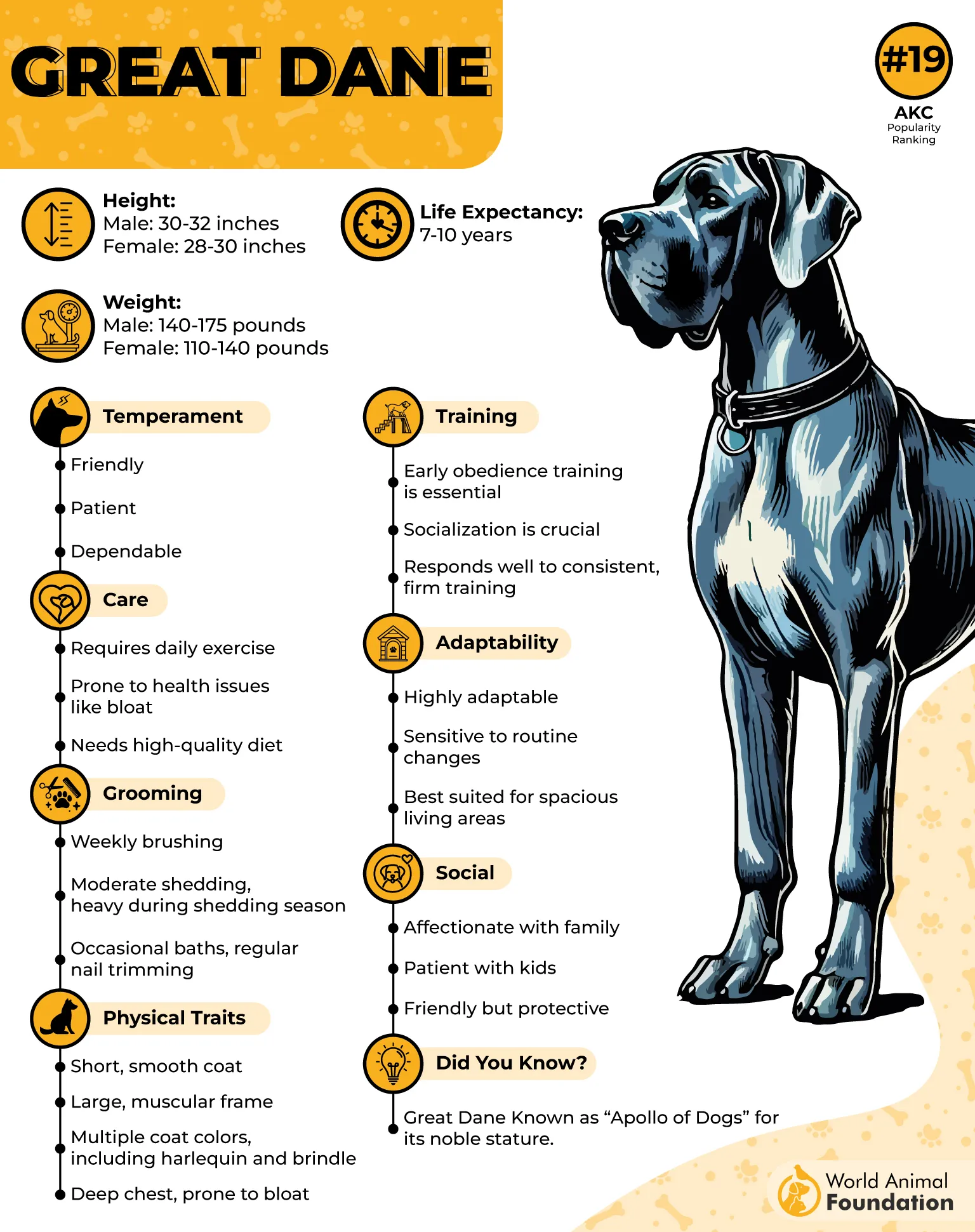
Lymphoma, or lymphosarcoma, is more common in Great Danes than in many other breeds. It affects white blood cells and can develop in areas like the lymph nodes, spleen, or liver. Thankfully, it often responds well to chemotherapy, though treatment requires a long-term commitment. Regular blood tests and monitoring for signs like swollen glands, weight loss, or difficulty breathing can help with early detection.
Hemangiosarcoma is a fast-growing cancer of the blood vessels, often forming in the spleen. It can remain hidden until a tumor ruptures, leading to sudden internal bleeding. Since early symptoms are rare, yearly bloodwork and abdominal ultrasounds are key for spotting this cancer early, especially in older Danes.
Staying on top of your Great Dane’s wellness with routine vet visits every six to twelve months is key. Even subtle changes in their behavior, like fatigue, appetite loss, or decreased playfulness, can be early signs of something serious. Catching cancer early gives your gentle giant the best shot at a longer, more comfortable life.
6. Scottish Terrier

Scottish Terriers, affectionately known as “Scotties,” are tough little dogs with big personalities. Originally bred in 1800s Scotland to hunt vermin, they’ve been part of American homes since the 1890s. Generally, a healthy breed, most Scotties live around 12 years, but like many dogs, they’re vulnerable to certain health conditions, especially cancer.
Lymphoma is a common cancer in Scottish Terriers, affecting white blood cells and potentially appearing anywhere in the body. It often responds well to chemotherapy, especially when caught early. Watch for swollen glands, weight loss, or labored breathing, and consider twice-yearly blood tests for early detection.

Scotties are also prone to mast cell tumors—skin lumps that can look harmless but may be cancerous. Any new bump should be checked by a vet. If needed, surgical removal is typically effective, especially when done early.
Scotties are 20 times more likely to develop bladder cancer, especially Transitional Cell Carcinoma (TCC), than other breeds. Watch for any change in urinary habits, signs like blood in the urine, or straining, which can mimic a UTI. Prompt vet attention is crucial if symptoms appear.
There is a greater risk of developing cancer in older dogs. Regular vet checkups, early diagnostics, and keeping an eye out for changes in behavior or new lumps can make all the difference. Many cancers are treatable or even curable if caught early.
7. German Shepherd

German Shepherds are loved for their intelligence, loyalty, and versatility. Whether working alongside police officers, guiding the visually impaired, or simply being a loyal family companion, they’re among the most trusted breeds. But like many large breeds, German Shepherds are more prone to certain cancers—something every pet parent should be aware of, states PetMD.
One of the most common cancers in this breed is hemangiosarcoma, an aggressive cancer of the blood vessels. It typically affects organs like the spleen, liver, and heart. Unfortunately, symptoms often don’t appear until the disease is advanced.
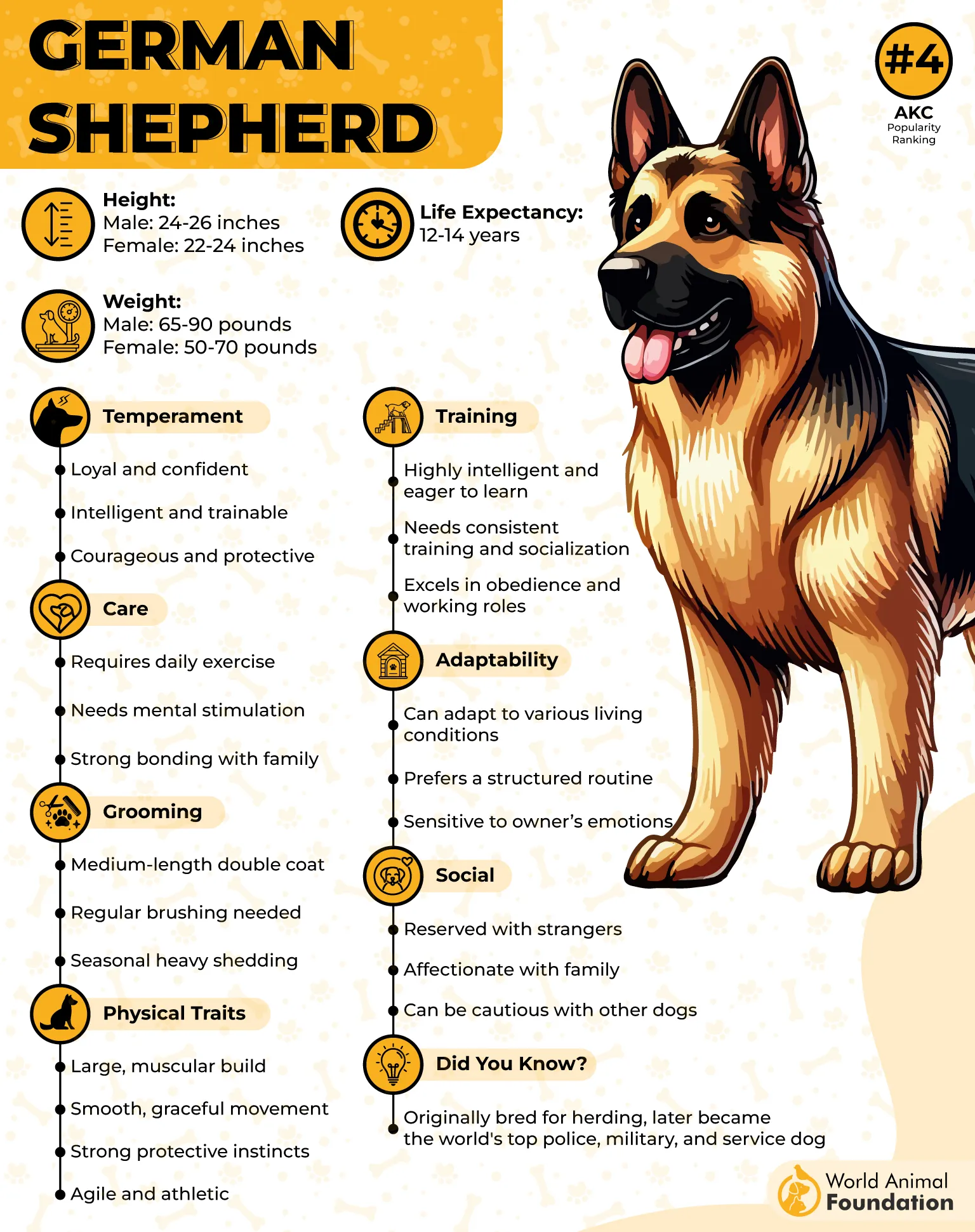
German Shepherds face several cancer risks, including osteosarcoma—a painful bone cancer-causing limping and swelling—where early treatment improves the quality of life. Female dogs not spayed are more prone to mammary cancer, which early detection and surgery, can often be managed.
Mast cell tumors, which appear as skin lumps, require prompt veterinary checks since treatment ranges from surgery to chemotherapy. Oral melanoma is another concern, with signs like bad breath and mouth growths, treatable through surgery, radiation, or immunotherapy.
They’re also at risk for urothelial carcinoma, a bladder cancer with symptoms such as blood in urine, painful or frequent urination, making regular vet visits crucial. Lastly, lymphoma affects the lymphatic system and often responds well to chemotherapy when caught early.
Though cancer risk can be worrying, staying proactive helps. Regular check-ups and early attention to changes improve diagnosis and outcomes. Thanks to advances in veterinary care, many German Shepherds with cancer still enjoy full, happy lives.
Conclusion
When it comes to canine cancer, understanding breed predispositions is key to protecting your dog’s health. Various dog breeds, especially purebred dogs like cocker spaniels, Boston terriers, Staffordshire bull terriers, and flat-coated retrievers, show a higher relative risk for cancers such as soft tissue sarcomas, mammary tumors, liver cancer, gastric carcinoma, and ovarian cancer.
Mixed-breed dogs often benefit from greater genetic diversity, which can lead to a reduced risk compared to some pedigree dogs. However, genetic and environmental factors both play important roles in cancer cases across different breeds.
Being aware of these risk factors and monitoring your dog closely can help catch issues like internal tumor ruptures early and improve outcomes. Regular vet check-ups and early detection remain vital in managing the average risk of cancer in dogs.


